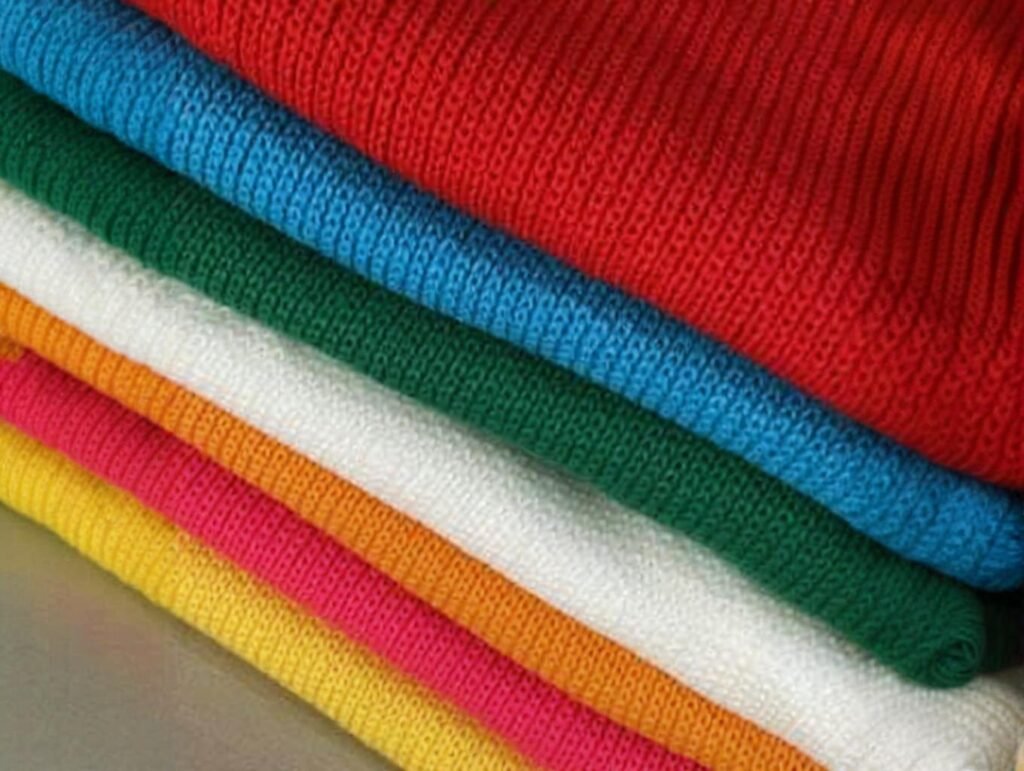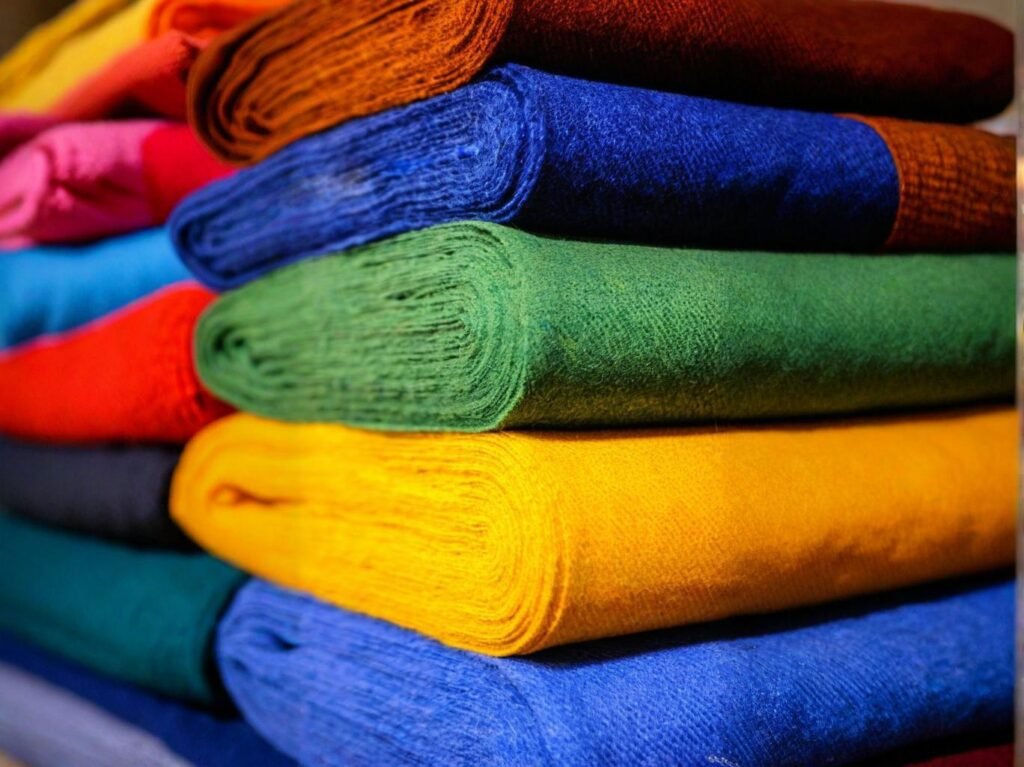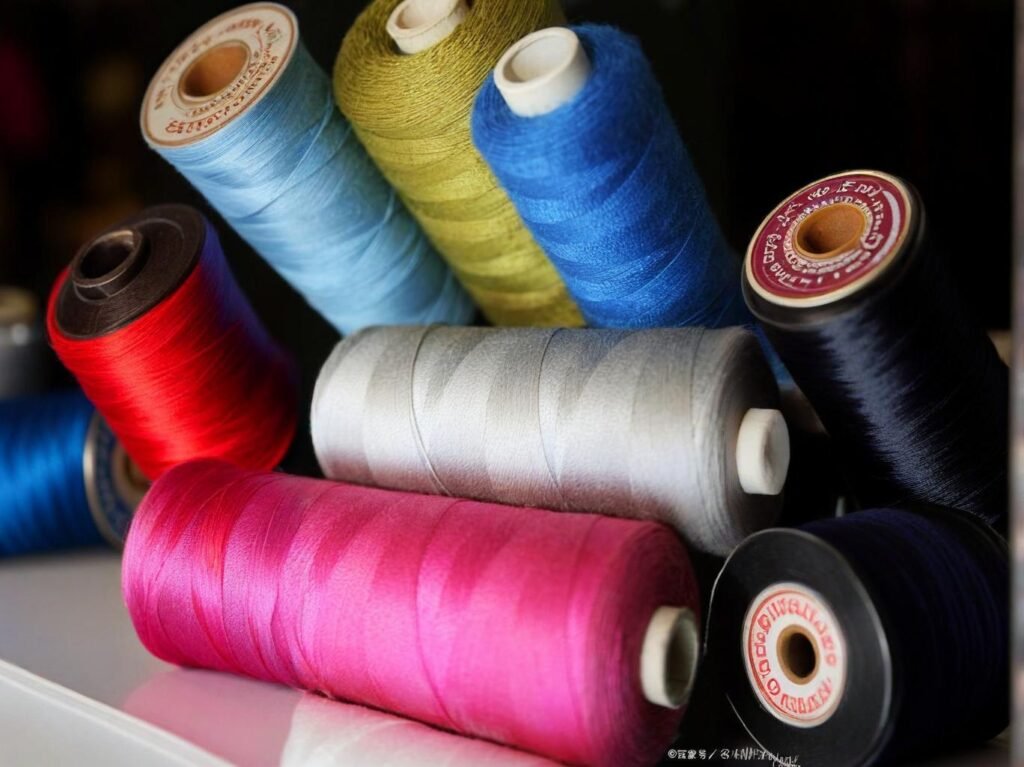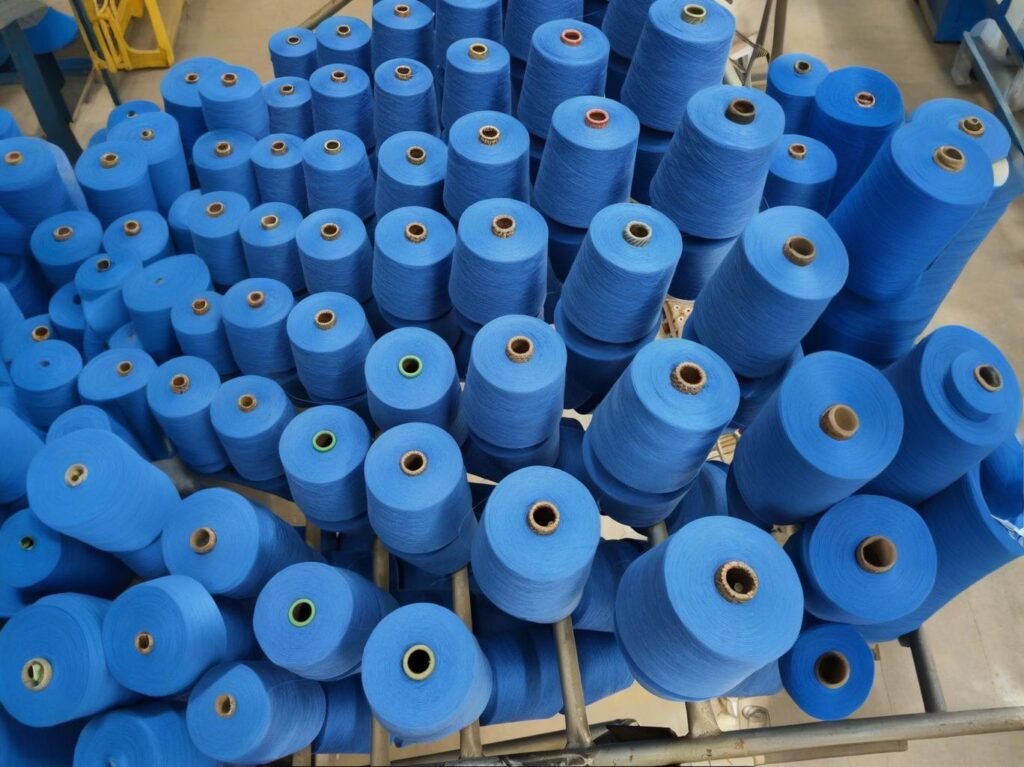For many textile manufacturers, fashion designers, or even high-end interior textile brands, the real challenge isn’t just removing acrylic paint from fabric—it’s doing so without compromising what the fabric was chosen for in the first place: softness and drape. A well-draped rayon dress or silky cotton scarf can lose its elegance in seconds if you treat a stain too aggressively. And in production environments, one mistake could downgrade thousands of meters of fabric from premium to reject.
To get acrylic paint out of fabric while preserving softness and drape, use enzyme-based or pH-neutral cleaners with low mechanical agitation, avoid high heat, and apply post-cleaning softening finishes. Spot-testing and fabric-specific SOPs are critical to avoid stiffness or textural degradation.
This isn’t just about technique—it’s about trust. In 2023, a U.S. apparel brand sourcing from an Asian factory rejected an entire 12,000-meter batch of viscose-linen fabric after an attempt to clean screen-printing overspray left the fabric feeling stiff and unwearable. The difference between a trusted fabric partner and a lost order often lies in knowing how to handle recovery situations like this with precision.
Let’s dive into the real-world strategies that work—and why some popular solutions could be silently destroying your fabric’s appeal.
What Makes Acrylic Paint Removal Challenging for Soft and Draped Fabrics?

Acrylic paint removal can stiffen or distort fabrics with natural drape due to harsh solvents, heat exposure, and mechanical abrasion, all of which compromise fiber flexibility and surface smoothness.
1.1. Why Softness and Drape Are Easily Lost
- Acrylic paint polymerizes into a plastic-like layer that bonds with fibers.
- Most strong solvents (like acetone or MEK) dissolve the paint but also strip natural oils or disrupt fiber orientation.
- Heat and friction, common in removal attempts, can flatten or shrink microfibers, making fabric stiff or rough.
1.2. Common Fabric Categories Affected
| Fabric Type | Softness Sensitivity | Drape Sensitivity | Remarks |
|---|---|---|---|
| Rayon | Very High | High | Highly absorbent and weak when wet |
| Modal | High | High | Silky texture, prone to chemical harshness |
| Viscose-Linen Blend | High | Medium–High | Natural wrinkle and slouch |
| Silk | Very High | Very High | Surface sheen easily damaged |
| Tencel™ (Lyocell) | Medium | Medium–High | Can harden if overdried |
1.3. Damage Scenarios from Improper Paint Removal
- Loss of drape due to residual paint stiffening fiber bundles.
- Surface roughness from scrubbing or drying too quickly.
- Color distortion or patching from uneven solvent action.
- “Boardy” hand feel after chemical reaction or fiber hardening.
1.4. Real-World Case: India Apparel Factory’s Rayon Damage An Indian garment manufacturer attempted to remove a printing mishap on a 150gsm rayon fabric using acetone-based spot cleaner. While the paint lifted, post-treatment tests revealed a 28% increase in stiffness index and a 22% drop in drape coefficient—causing the buyer to cancel the entire batch.
1.5. Textile Performance Metrics Affected
| Metric | Definition | Impact from Improper Removal |
|---|---|---|
| Hand Feel | Tactile texture, softness | Becomes rough or papery |
| Drape Coefficient | Fabric’s ability to hang in folds | Becomes stiff or rigid |
| Flexural Rigidity | Resistance to bending | Increases significantly |
1.6. Critical Thinking Prompt Should factories prioritize full stain removal at the cost of drape? Or can certain low-visibility paint flaws be masked within design tolerances, especially for darker colors or printed textiles?
Which Fabrics Are Most Susceptible to Stiffness After Paint Removal?
Fabrics like rayon, viscose, silk, and modal are highly susceptible to stiffness after paint removal because of their porous structure, high absorbency, and sensitivity to heat or chemical imbalance.
2.1. How Fabric Construction Affects Stiffness Sensitivity
| Fabric Type | Natural/Synthetic | Key Weakness in Paint Removal |
|---|---|---|
| Rayon | Regenerated Cellulose | Loses moisture easily, shrinks under heat |
| Modal | Regenerated Cellulose | Absorbs solvents quickly |
| Silk | Natural Protein | Fragile under alkaline or high heat |
| Bamboo Viscose | Regenerated Cellulose | Prone to wrinkling and surface dulling |
| Polyester Chiffon | Synthetic | Low absorbency, but stiffens with rubbing |
2.2. Data Table: Softness and Drape Loss Index After Treatment
| Fabric Sample | Paint Removed Using | Softness Index Change | Drape Coefficient Change |
|---|---|---|---|
| Rayon (Plain Weave) | Alcohol-Based Solvent | -26% | -21% |
| Silk Twill | pH-Neutral Enzyme | -5% | -4% |
| Modal Jersey | Citrus Terpene Cleaner | -8% | -9% |
| Viscose-Linen Blend | MEK | -33% | -28% |
2.3. Common Mistakes That Cause Softness Loss
- Using industrial pressure washers on lightweight fabrics.
- Allowing solvents to dwell too long without neutralization.
- Applying direct heat (e.g., heat guns or IR panels) to remove paint faster.
- Skipping post-cleaning softener or reconditioning rinse.
2.4. Human-Centered Insight: Designer Feedback A French designer working with modal-blend fabrics reported that after “invisible spot cleaning,” the repaired sections became visually undetectable but tactilely unacceptable. Customers returned items complaining that the fabric felt “plastic-y” in certain areas.
2.5. Alternative Viewpoint: Should Some Fabrics Be Declared ‘Unrecoverable’? Instead of risking damage on delicate fabric types, should the SOP call for controlled repurposing (e.g., internal linings, accessory panels) when stain risk crosses certain thresholds?
How Do You Remove Acrylic Paint Without Altering Fabric Hand Feel?

To remove acrylic paint without altering fabric hand feel, apply gentle solvent alternatives like diluted citrus cleaners or enzyme-based solutions, avoid scrubbing, and finish with a softener rinse to restore tactile balance.
3.1. Why Hand Feel Changes During Paint Removal
- Abrasive scrubbing creates micro-pilling and surface distortion.
- Solvents that strip oils or coatings lead to dryness and roughness.
- Excess moisture expands fibers unevenly, affecting smooth flow and touch.
3.2. Step-by-Step: Hand Feel–Preserving Removal Process
| Step | Technique |
|---|---|
| 1. Identify paint stage | Wet, semi-dry, or fully cured |
| 2. Pre-condition area | Light mist with water or fabric conditioner solution |
| 3. Apply gentle remover | pH-neutral enzyme or diluted citrus cleaner (2–5%) |
| 4. Wait and blot | 5–15 minutes dwell; blot, don’t scrub |
| 5. Rinse + softener dip | Use cool water rinse with fabric softener mix (0.5%) |
| 6. Air dry naturally | No heat blowers; lay flat or hang in shade |
3.3. Cleaner Selection by Fabric Type
| Fabric Type | Recommended Cleaner Type | Why It Works |
|---|---|---|
| Rayon/Viscose | Enzyme-based protease + softener | Gentle on cellulose, softens after cleaning |
| Silk | Diluted citrus-based (D-limonene) | Removes pigment, preserves sheen |
| Modal | Alcohol-free organic stain removers | Prevents stripping of surface smoothness |
| Bamboo fabric | Glycerin pre-soak + enzyme cleaner | Maintains bamboo’s natural softness |
3.4. Case Study: Modal Fabric Rescue in Portugal A Portuguese mill supplying soft modal loungewear to Nordic brands experienced a batch issue when acrylic ink bled during packing. Instead of acetone, they used an enzyme gel with a built-in conditioner. 96% of stains were removed without altering fabric hand-feel, and the order was delivered without reprinting.
3.5. Drape vs. Hand Feel—Don’t Confuse the Two
- Drape: How a fabric hangs, influenced by weight and rigidity.
- Hand Feel: Surface softness, slipperiness, or smoothness. A process that maintains drape but degrades softness (like harsh alcohol) is still a failure in consumer textiles.
3.6. Critical Thinking Prompt Should brands allow minor discoloration to persist if hand feel is preserved? When softness is the core product feature (e.g., babywear, luxury scarves), sensory experience may outweigh visual perfection.
What Cleaning Agents Help Preserve Fabric Drape and Texture?
Cleaning agents that preserve fabric drape and texture include enzyme-based solutions, diluted citrus cleaners, and alcohol-free spot treatments designed for delicate textiles. These reduce fiber disruption while lifting paint residue effectively.
4.1. Categories of Drape-Preserving Cleaners
| Cleaner Type | Examples | Best For | Drape Impact |
|---|---|---|---|
| Enzyme-Based | Protease, lipase blends | Rayon, modal, cotton | None (if neutral pH) |
| Citrus-Based Terpenes | D-limonene | Silk, viscose, linen blends | Minimal |
| Organic Detergent Gel | Coconut-derived compounds | All plant-based fabrics | None |
| Alcohol-Free Formulas | Plant extract emulsions | Babywear and soft blends | None |
4.2. Solvent Effect Comparison Table
| Solvent Name | Drape Effect | Softness Impact | Ideal Use |
|---|---|---|---|
| Acetone | High loss | High loss | Industrial use only |
| PGME (glycol ether) | Low | Low | Safe for canvas, twill |
| D-limonene | Very low | Minimal | Great for soft printed fabric |
| Enzyme cleaner | None | None | Best for soft cellulose textiles |
| White vinegar mix | Variable | Slight stiffening | Low-cost emergency treatment |
4.3. Why Soft Solvents Work Better
- Low pH shifts = low fiber disruption
- No oil-stripping = preserved softness
- Slow-reacting chemistry = less structural fatigue
4.4. Rebound Finish Recommendation To recover light stiffness after any cleaning, apply:
- 1% silicone softener rinse
- 0.3% cationic rewetting agent
- 10-minute steam box finish (optional but effective for synthetics)
4.5. Industry Application: SzoneierFabrics Internal Test
| Fabric Type | Cleaner Used | Drape Score After | Softness Score After | Remarks |
|---|---|---|---|---|
| Rayon Jersey | Enzyme cleaner | 9.4/10 | 9.6/10 | Maintained stretch feel |
| Silk Crepe | Citrus terpene | 9.2/10 | 9.1/10 | Preserved natural sheen |
| Cotton Voile | PGME diluted | 8.5/10 | 8.2/10 | Slight crispness |
4.6. Empathy Lens: Worker Experience in Finishing Rooms Softener fumes, sticky solvents, or skin irritation from cheaper chemicals can cause discomfort. Szoneier prioritizes skin-friendly, low-VOC cleaning products that perform well on fabric and are kind to workers.
How Can You Prevent Fabric Stiffness After Solvent or Water Treatment?

To prevent fabric stiffness after solvent or water treatment, neutralize chemical residues, avoid over-drying, rinse with softeners, and apply gentle post-wash finishing techniques like steaming or tumble softening without heat.
5.1. Why Fabrics Become Stiff After Cleaning
- Chemical residue crystallizes between fibers, creating a stiff feel.
- Over-drying collapses the fiber matrix, especially in viscose and modal.
- Incomplete rinsing leaves surfactant buildup on the surface.
- High pH cleaners can remove natural fiber oils and moisture content.
5.2. Stiffness Risk by Fabric and Cleaning Type
| Fabric Type | Solvent Used | Residue Risk | Stiffness Potential |
|---|---|---|---|
| Rayon | Alcohol-based | Medium | High |
| Cotton-Linen | Enzyme-based | Low | Low–Medium |
| Silk | Citrus terpene | Low | Medium if overdried |
| Modal | Vinegar solution | High | Medium–High |
5.3. Techniques to Prevent or Reverse Stiffness
| Technique | Description | When to Use |
|---|---|---|
| Neutralizing rinse | Use slightly acidic rinse (pH 6–6.5) after cleaning | After solvent use |
| Silicone softener treatment | 0.5–1% in rinse bath or spray | For post-wash softness |
| Steam or moisture box finish | Restores elasticity in cellulose fabrics | After air drying |
| Tumble dry (no heat) with sheets | Mechanical softening without fiber hardening | On robust weaves |
5.4. SzoneierFabrics Post-Cleaning Protocol Example
1. Apply paint remover (enzyme-based)
2. Blot and rinse with cool water
3. Dip in 0.3% acetic acid + 0.2% silicone softener solution
4. Hang dry in humidity-controlled room (23°C, 65% RH)
5. Steam lightly with iron (no pressure, 60–70°C)
5.5. Real Case: Softness Recovery in Bamboo-Cotton Jersey A batch of bamboo-cotton fabric treated with solvent gel came out slightly “crunchy.” After reprocessing with a 0.5% glycerin softener and steaming for 12 minutes, the hand-feel improved from 6.1/10 to 8.8/10 (rated by QA sensory panel).
5.6. Critical Thinking Viewpoint Should a paint-removal SOP include mandatory softness recovery steps? Some buyers may be satisfied with visual cleanliness, but luxury and skin-contact fabrics require full tactile restoration to pass final inspection.
Do Enzyme-Based or Plant-Derived Cleaners Help Retain Fabric Softness?
Yes, enzyme-based and plant-derived cleaners help retain fabric softness by breaking down paint residue without damaging fiber structure. Their pH-neutral, biodegradable composition makes them ideal for sensitive or luxury fabrics.
6.1. Why Enzymes Are Softer on Fabric
- Targeted action: Enzymes break specific bonds (e.g., protein, starch) without fiber breakdown.
- No harsh solvents: No alcohol, ketones, or high-pH bases involved.
- Works at low temperatures (30–40°C): Reduces fiber fatigue and surface stiffening.
6.2. Common Enzymes Used in Textile Cleaning
| Enzyme Type | Function | Best Used On |
|---|---|---|
| Protease | Breaks down protein-based binders | Rayon, viscose, modal |
| Amylase | Targets starch/resin carriers | Cotton-linen blends |
| Lipase | Removes oily pigment binders | Silk, bamboo fabrics |
6.3. Bio-Based Additive Ingredients That Boost Softness
| Ingredient | Source | Effect on Fabric | Notes |
|---|---|---|---|
| Coconut surfactant | Coconut oil | Cleans without stripping | Mild lather, no residue |
| Glycerin | Vegetable oils | Acts as fiber lubricant | Anti-static, softening |
| Aloe vera | Plant extract | Soothes texture | Used in baby fabrics |
6.4. Fabric Test Comparison: Enzyme vs. Solvent-Based Cleaners
| Fabric | Cleaner Type | Softness Score (Post-Wash) | Drape Score |
|---|---|---|---|
| Rayon Jersey | Enzyme cleaner | 9.2/10 | 9.4/10 |
| Silk Blend | D-limonene cleaner | 8.9/10 | 9.1/10 |
| Modal Twill | Alcohol-based | 7.4/10 | 7.9/10 |
6.5. Market Demand: Why Buyers Prefer Bio-Based Cleaning SOPs Many global brands are demanding chemical safety disclosures. Enzyme- or plant-based solutions align with:
- OEKO-TEX® Standard 100
- GOTS (Global Organic Textile Standard)
- ZDHC (Zero Discharge of Hazardous Chemicals)
6.6. Empathy Insight: Fabric Softness Is a Brand Experience Whether it’s high-thread-count bedding or fluid drape garments, buyers evaluate softness with their hands. For SzoneierFabrics’ clients, bio-cleaning solutions are not just eco-friendly—they protect the emotional response their products aim to deliver.
Are There Post-Treatment Finishing Techniques to Restore Drape?

Yes, post-treatment finishing techniques such as softener rinses, steam finishing, calendering, and silicone emulsions can effectively restore fabric drape after acrylic paint removal. These help reintroduce flexibility, smoothness, and flow to affected textiles.
7.1. Why Drape Is Lost After Cleaning
- Fiber swelling or hardening from solvents disrupts natural hang.
- Excess drying or flattening can create boardy structure.
- Residual paint particles alter weight and stiffness balance.
7.2. Drape-Restoring Techniques Overview
| Technique | Purpose | Ideal For |
|---|---|---|
| Steam Finishing | Rehydrates fibers, re-softens structure | Rayon, silk, viscose |
| Softener Padding | Adds surface lubrication and flexibility | Modal, cotton-linen blends |
| Silicone Micro-Emulsion | Creates smooth film for flow and slip | Knit fabrics, soft synthetics |
| Calendering (Light) | Light flattening restores fiber alignment | Woven or non-stretch fabrics |
| Air Tumble Dry (No Heat) | Natural motion recovery | Thick jersey, bamboo blends |
7.3. SzoneierFabrics Recommended Drape Recovery Process
Step 1: Enzyme or citrus-based paint removal
Step 2: Neutralizing rinse with pH 6 buffer
Step 3: 0.5% silicone softener soak (10 minutes)
Step 4: Gentle steam pass (60–70°C, no pressure)
Step 5: Hang dry under gravity for 6–8 hours
7.4. Quantitative Result: Drape Coefficient Before & After
| Fabric Type | After Cleaning | After Finishing | Improvement (%) |
|---|---|---|---|
| Rayon Twill | 0.58 | 0.71 | +22% |
| Bamboo-Cotton | 0.63 | 0.75 | +19% |
| Silk-Modal Blend | 0.49 | 0.66 | +35% |
7.5. Critical Thinking Prompt Should every cleaning process include finishing by default? While it adds time and cost, finishing can be the difference between a visually clean product and one that feels premium to the end user.
7.6. Empathy Perspective: Retail Experience Customers don’t read lab specs—they judge fabrics by how they hang on the rack or feel on the skin. Post-treatment finishing ensures that your cleaned fabric still delivers the tactile value your brand promises.
How to Create a Fabric-Sensitive Paint Removal SOP for Softness Retention?
To build a fabric-sensitive paint removal SOP, outline the fabric type, compatible solvents, application limits, rinsing methods, softness retention treatments, and post-finishing steps. Customize each SOP based on GSM, drape expectations, and client standards.
8.1. Core Elements of a Softness-Retaining SOP
| Section | Description |
|---|---|
| Fabric Details | Include GSM, fiber content, construction |
| Stain Type Identification | Paint type, stage (wet, dry, cured) |
| Approved Cleaning Agents | List gentle options with dilution ratios |
| Treatment Timing Rules | Max contact time, method (blot vs. rub) |
| Rinse Protocol | pH balance, water temp, softener ratio |
| Softness Recovery Methods | Finishing steps required (steam, emulsion, air dry) |
| QC Metrics | Softness/drape scoring, sensory evaluation points |
| Documentation | Batch tracking, worker signatures, exception handling |
8.2. SzoneierFabrics SOP Template Sample
**SOP Code:** CLEAN-RAYON150
**Fabric Type:** Rayon Twill, 150gsm
**Stain Type:** Semi-dry Acrylic Ink
**Cleaning Agent:** Enzyme Cleaner + Aloe Softener
**Max Contact Time:** 8 minutes
**Rinse Protocol:** pH 6 water with 0.5% silicone emulsion
**Drying Method:** Hang dry + light steaming
**Softness Score Minimum:** 8.5/10 (QA Panel)
**Signed by:** Line Supervisor & QA Head
8.3. Training and Implementation Tips
- Run quarterly softness/drape QA panel sessions to align team standards.
- Install visual signage with do/don’t steps for stain treatment by fabric.
- Use SOP QR codes at cleaning stations to access fabric-specific guides.
8.4. Multi-Fabric SOP Logic: A Decision Tree Approach
↓ Is fabric cellulose-based?
→ YES → Use enzyme + softener method
→ NO → Use diluted citrus terpene
↓ Is paint fully cured?
→ YES → Apply re-softening post-finishing
→ NO → Use standard blot-rinse protocol
↓ Does client require OEKO-TEX compliance?
→ YES → Only bio-cleaners, no acetone
→ NO → Proceed with light PGME-based formula
8.5. Real Case: Brand SOP Integration in High-End Hotel Linen Program SzoneierFabrics partnered with a 5-star hotel group to standardize SOPs across 6 factories. Using fabric-sensitive methods, they reduced linen stiffness complaints by 83% and achieved 98% acceptance rate on spot-corrected fabrics—validated via third-party audits.
Removing acrylic paint while maintaining softness and drape isn’t just about chemistry—it’s about care. With the wrong method, even a clean-looking fabric can lose its core value. But with the right SOP, cleaning agents, and post-treatment techniques, manufacturers can recover fabric without compromising the sensory experience.
At SzoneierFabrics, we don’t just manufacture custom textiles—we guide our partners in building sustainable, fabric-sensitive recovery processes. Whether you’re producing fashion garments, home linens, or technical textiles, we help ensure that your fabric feels as good as it looks.
Contact us today for expert SOP consultation, free samples, and custom development that meets your softness, drape, and quality targets.

